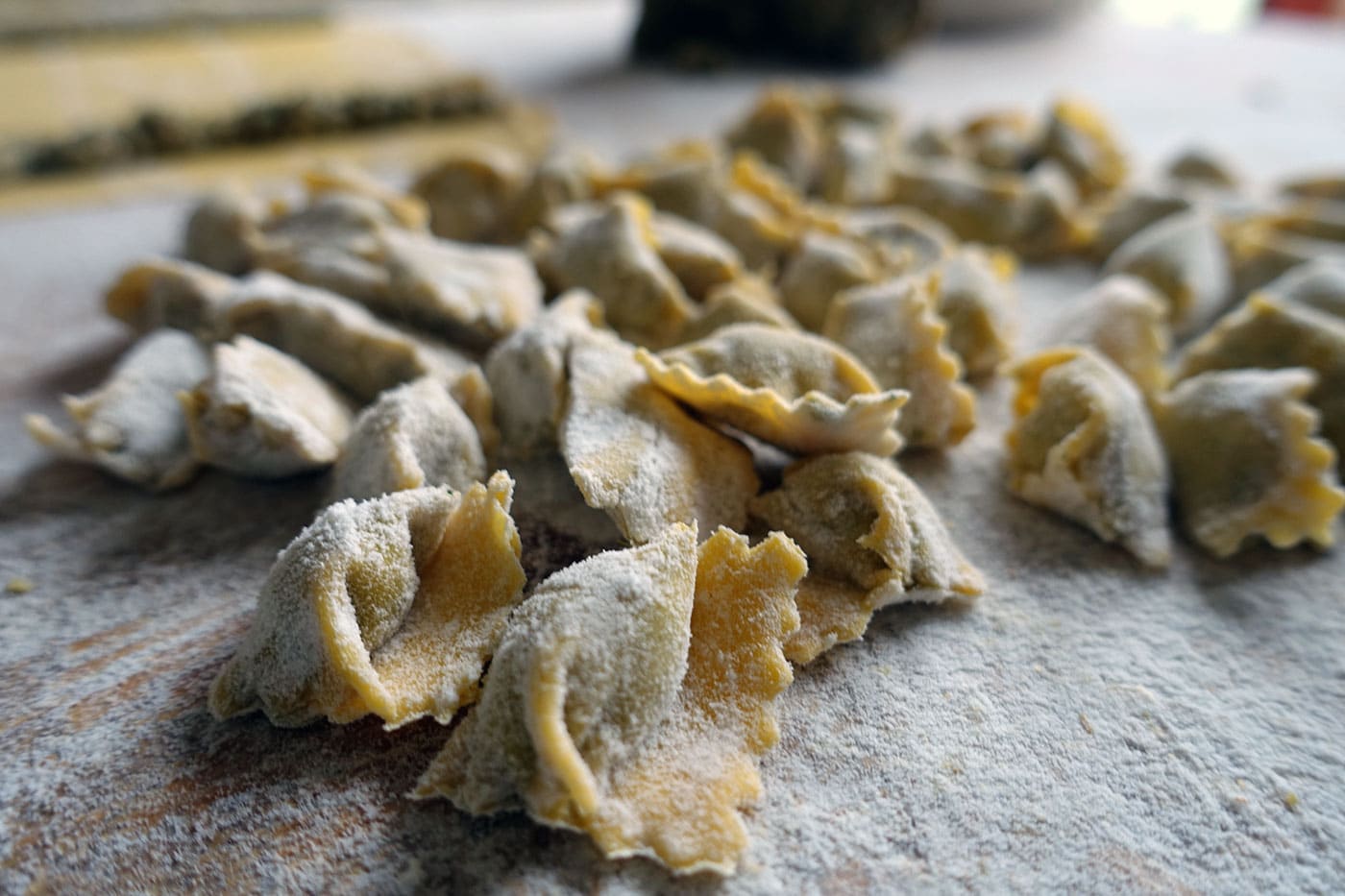Originally from the Langhe and the Monferrato area, ravioli Plin they are a traditional Piedmontese first course, generally served on the tables during the Christmas celebrations. Unique in kind and preparation, these ravioli stand out for their softness stuffed with roast meat, wrapped in a pastry so thin that the internal seasoning can be seen. It is a dish recognized as traditional agri-food product, in this case from Piedmont, since the preparation method, the ingredients used and their consumption are particularly rooted in the territory of origin from which their peculiarities derive.
Ravioli Plin: origin and history
Similar to agnolotti, of which they can be considered a variant, Plin ravioli sink their own roots in the peasant culinary tradition of Piedmontese housewives who, with the aim of ennobling leftover meat, used to combine mixed, uneaten meats in a recycled kitchen that gave life to new recipes. Precisely because the preparation could be different each time, There is no official recipe for this particular type of ravioli, which is distinguished from all the others, including agnolotti, by the filling made mostly of roast meat. In the Langhe and Monferrato only roast veal or pork is used, wrapped in a thin pastry originally prepared with water and flour, now instead based on eggs and wheat flour, while in the other areas of Piedmont the filling is made up of of meat, including vegetables, preferring cabbage, chard and spinach. Another characteristic of Plin ravioli is the small boat shape, made by hand with the method from which the name of this ravioli derives. The dialect term “plin”, pinch, in fact refers to way in which the filling is closed inside the fresh pasta, gently pinching the ends.
Between curiosity, there is that of the ancient custom of consuming i Plin ravioli with napkin. In past times it was customary to cook ravioli, drain them and then serve them inside a folded napkin, so as to preserve their softness. They were eaten like this, without any seasoning, except in some rare cases in which they were accompanied by a cup of light broth and a glass of red wine.
How to prepare Plin ravioli
Being a simple dish, Plin ravioli does not require too elaborate preparation, much less a long list of ingredients. For the pastry: 00 flour and eggs. For the filling: pork and veal, onion, oil and salt.
For a traditional filling, you fry onion and garlic over medium heat in a pan to which you then add the rather coarsely chopped pork and veal. Leave the meat to cook until completely cooked and then chop it together with eggs, salt, pepper and a pinch of nutmeg to obtain a soft mixture.
Immediately after preparing the filling, prepare the pastry by placing a well of 00 flour on a rather large pastry board, in the center of which add the egg yolks, working together until you obtain a mixture with a homogeneous consistency. Once you have obtained a dough of the right color and softness, roll out a sheet of approximately 3 mm thick.
At this point all that's left to do is pour the meat filling into a piping bag, with which to prepare small nuts on the pastry, about 1 cm apart from each other. The pastry is folded lengthwise, so as to leave the filling inside intact, and the edges of the ravioli adhere to each other. To close the ravioli well, the characteristic pinch, "Plin", is used. In a short time the typical pasta from the Piedmontese Langhe will be ready.
Piedmontese Plin in an original recipe by 'Gusto
In Rome, the restaurant 'Gusto offers the Piedmontese plin ravioli in a completely different version from the original one but equally tasty and capable of enhancing the delicate and thin dough of the ravioli. Filled with cheese and pepper, the plin are seasoned with octopus ragù, for a dish in which the Piedmontese tradition is expressed in the flavors of Roman cuisine.





